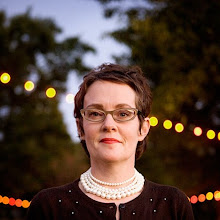
© Jacques Charlier
During my trip to Helsinki for the IKT conference, Enrico Lunghi, current IKT President and Director of the Musee d'Art Moderne Grand-Duc Jean (Mudam) Luxembourg told me about curating Belgian artist Jacques Charlier's "100 SEXES D'ARTISTES" for the French-speaking (Wallonia) community at the Venice Biennale.
Charlier eats at the edges of bourgeois pretension, like fellow Belgians Renee Magritte and Wim Delvoye, and the "100 SEXES..." project continues Charlier's quasi-scientific exposition on the genesis of creativity in artists by making drawings of their genitalia. This project, begun in the 1970s, is Charlier's mockumentary-style reduction of artistic "style" to secondary sexual characteristics (and a form of "macho feminism"?).
After being submitted to be part of the collateral events (in the form of posters scattered around Venice) for the Venice Biennale, supported by Ministry of the French Speaking community of Belgium (Wallonia Brussels), the Department of Plastic Arts with the help of Wallonia-Brussels International (WBI), Lunghi received a letter from Biennale artistic director Daniel Birnbaum disinviting the project. After an appeal, the disinvitation was confirmed.
So the posters can't be shown in Venice, but they will be in seven European cities (Antwerp, Belgrade, Bergen, Luxembourg, Metz and Namur) during the months of June and July, with other cities expressing interest as well. In Venice, however, the team will show all the documents relating to the project on a boat which will be moored along the Grand Canal, close to the Giardini, during the professional (pre-opening) days so visitors will still be able to see the drawings--and decide for themselves. It does mean, however, that the general public, tourists and residents alike, will not see the works--and weren't they ultimately the artist's target audience?
I wonder why this form of nudity--and a project with funding and support from legitimate institutions--would be censored and not, say, Francesco Vezzoli's 2005 "Trailer for a Remake of Gore Vidal's 'Caligula' "? In Vezzoli's trailer--produced with blessings from Gore Vidal, who sued to have his name taken off the 1979 movie--the artist was drawing a parallel between the excesses of Caligula with the art world's "desire for visibility" as represented through the Venice Biennale. (Other soft porn / corn, Italian-themed works are Jeff Koons's performances with former wife La Cicciolina, intended to skewer American--and the art world's?--puritanism, image below).

© Jeff Koons
Birnbaum told Lunghi on the phone (and confirmed subsequently via e-mail) that the reason for censorship was a fear of offending the artists whose genitals are represented. One might ask, cynically, does this have anything to do with the art market instead?
Is quasi-pornography and art world critique acceptable in forms of high production (Vezzoli, Koons) and not, as in Charlier's place, base modesty? Are the Charlier works just, too, well...naked?
To quote Enrico Lunghi regarding the censorship: "It only remains for the art world and journalists (at any rate, those who don’t just parrot the official press releases) to ask themselves what values the Venice Biennale is promoting if it censors an artistic project in such a dubious and irresponsible manner. Is it up to the Biennale to castrate artists by deciding for them what might offend those whose very existence consists of forever extending the limits of freedom?"
This preemptive self-censorship seems familiar to Americans caught up in the culture wars of the 1980s and 1990s. Does this censorship suggest an Americanization of European sensibility, or simply the manifestation of personal taste? In any case, a vigorous dialogue around this project that has already begun, and we'll learn a lot from it.
June 4 up-date (sent in by Anila Rubiku):
From an interview of Daniel Birnbaum by Nicola Davide Angerame at
http://www.exibart.com/notizia.asp?IDNotizia=27815&IDCategoria=1&MP=true
"In Italia ci sono stati recenti casi d’intolleranza e censura. Da Cattelan a Milano alla mostra di Sgarbi, sempre a Milano, a quella di Adel Abdessemed a Torino. Dove inizia la libertà dell’arte e degli artisti, e dove deve finire la libertà della politica e della società quando applicano la censura?
Gli artisti dovrebbero essere liberi quando creano i loro lavori, ma sono anche semplicemente esseri umani, che dovrebbero mostrare rispetto verso gli altri esseri umani, come deve fare chiunque. Non ci sono misteri. Nella maggior parte dei casi è una questione di decenza." (I would translate this but my Italian is a bit rusty, it would only be an approximation...)














